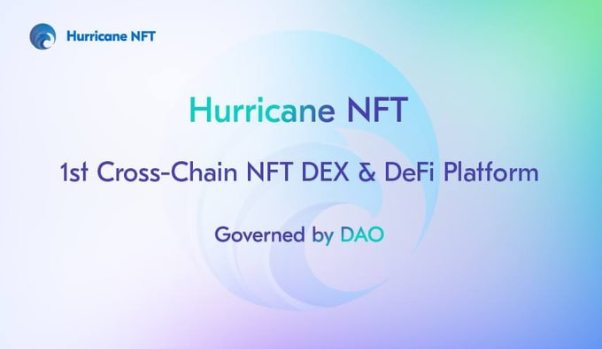
Introducing Hurricane NFT, 1st Avalanche based cross-chain NFT marketplace and DeFi
NFT market is becoming more and more popular and hyped, cross-chain NFT asset trading and DeFi spreads to wider masses. This is an article about Hurricane NFT, the first cross-chain marketplace and DeFi solution on Avalanche blockchain. Created by the leading DEX team on Avalanche, Hurricane NFT has 3 main modules, including marketplace, certificate vouchers, and DeFi ecosystem. Hurricane NFT marketplace gives an opportunity to users to trade NFTs on any network in one whole place, saving a lot of time and fee/swapping price. There will be a huge amount of available chains like Ethereum, Binance Smart Chain, Solana, Fantom, Polygon, etc. Furthermore, Hurricane NFT supports the following solutions, options and features for their participants: The NFT certificate vouchers. It allows multi-chain NFT investments to easily be bridged from multi-chain to one chain, so that low gas fees, fast trading multi-chain NFTs with single-chain crypto, and high liquidity of NFT assets can be realized. NFT DeFi applications, including fragmentation, lending, fixed interest, options, and other DeFi solutions and features. In fact, Hurricane NFT will also be fully governed by DAO and share ecosystem options to DAO members. It allows them: Make transactions with fee discounts; Take access to dividends from platform transaction fees by staking $NHCT; Voting for the use of the promoting banners on the website; Take part in a whitelist for a new collection series that has an initial supply on Hurricane NFT; Use Yield farming with HCT rewards by providing liquidity for NHCT trading pairs. The Hurricane NFT DAO token $NHCT will be launched soon, and listed in many places. With proven cross-chain technology and infrastructure on Avalanche and innovation on DAO-driven mechanism, HurricaneNFT is aiming to become the new challenger to NFT marketplace leaders, such as Opensea. Find more details from HurricanesNFT on the following links: Website: https://www.hurricanenft.io/ Twitter: https://twitter.com/hurricaneswap Telegram: https://t.me/HurricaneSwap Medium: https://hurricaneswap.medium.com/ Discord: https://discord.com/invite/s2Y7wanVyQ – The name of the company: ALPHA VALUE LIMITED – Country: SINGAPORE – State: SINGAPORE – Email:contact@hurricaneswap.com (http://Email%EF%BC%9Acontact@hurricaneswap.com/)














